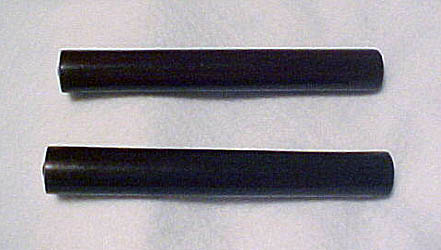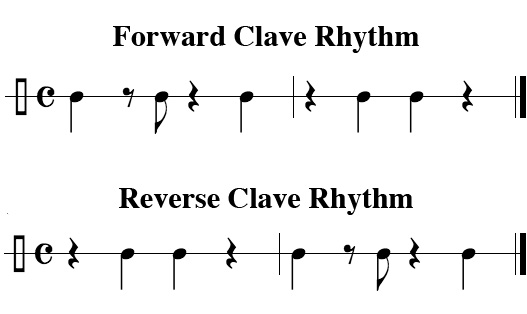Terms - C
C
C clef
C double flat
C double sharp
C flat
C sharp
C-Schlüssel
C.d.
C.s.
Ca.
cabaça
cabaletta
caccia
cachucha
cadence
cadence, amen
Cadence, authentic or perfect
cadence, church
cadence, complete
cadence, deceptive
cadence, drum
cadence, final
cadence, full
cadence, full close
cadence, half
cadence, half close
cadence, imperfect
cadence, interrupted
cadence, phrygian
cadence, plagal
cadencia
cadenza
caesura
caisse chinoise
caisse claire
caisse de résonance
caja china
cakewalk
calando
calcando
calderón
call and response
Call to Quarters
Calliaphone
calliope
calmando
calmato
calypso
camera
caminando
canarie
cancion
cancrizans
canon
canon cancrizans
cantabile
cantando
cantare
cantata
canticle
cantilena
Cantio
canto
canto funebre
cantor
cantoris
cantus
cantus firmus
canzona
canzone
capo
capocchia
capotasto
cappella
capriccio
carattere
carita
Carmen
carol
carole
cassa armonica
cassa chiara
cassa di risonanza
cassation
cassettina
castanets
castrato
Cäsur
catch
catgut
cautionary accidental
cavata
cavatina
cavatine
cavigliere
Cb. Cl.
CE
Cecilia
cédez
celesta
celeste
cello
Cembalo
cennamella
cent
cent-vingt-huitième
centoventottavo
cervalat à musique
cervelas
cervelat
Ces
Ceses
cesura
césure
cha-cha
cha-cha-cha
Chace
chaconne
chalumeau
chamber choir
chamber ensemble
chamber music
chamber orchestra
chamber sonata
chanson
chant
chant funebre
chant, plain
chanter
chapeau chinois
character piece
charango
Charleston
chasse
chest voice
chevalet
chevalier
cheville
chevillier
chiave
chiave di baritono
chiave di basso
chiave di basso profondo
chiave di contralto
chiave di do
chiave di mezzosoprano
chiave di soprano
chiave di tenore
chiave di trasposizione all'ottavo
chiave di violino
chiave di violino francese
chiave neutra
chiesa
chimes
Chinese block
Chinese mouth organ
Chinese panpipe
chiocciola
chitarrone
choir
choral
choral prelude
chorale
chorale variations
chord
chord progression
chord symbol
chordal declamation
chordophone
chorus
chromatic
chromatic scale
chromatic signs
chromaticism
church cadence
Church Call
church mode
church sonata
ciaramella
ciciliano
cimbali
cimbalo
cimbalos
Cimbelstern
cinelli
cinque pas
circa
circle of fifths
circular breathing
Cis
Cisis
cithara
citole
cittern
Cl.
cláirseach
clapper
claque
clarinet
clarinete
clarinette
clarinette alto
clarinette basse
clarinette contrebasse
clarinetto
clarinetto basso
clarinetto contrabasso
clarinetto contralto
clarino
clársach
Classical music
clausula
clave
clave de barítono
clave de do
clave de do en cuarta
clave de do en primera
clave de do en quinta
clave de do en segunda
clave de fa
clave de fa en quinta
clave de fa en tercera
clave de mezzosoprano
clave de octavas
clave de sol
clave de sol en primera
clave de soprano
clave de tenor
clave de transposiciones de octava
clave de violín francés
clavecin
claveçin
clavecín
claves
clavessin
clavicembalo
clavicémbalo
clavichord
Clavicimbel
clavier
clé
clé d'ut
clé d'ut 2e
clé d'ut 3e
clé d'ut 4e
clé d'ut 5e
clé d'ut cinquième ligne
clé d'ut de sol
clé d'ut première ligne
clé d'ut quatrième ligne
clé d'ut seconde ligne
clé d'ut troisième ligne
clé de fa 3e
clé de fa 5e
clé de fa quatrième ligne
clé de fa troisième ligne
clé de mezzo-soprano
clé de octaviée
clé de sol 1re
clé neutre
clef
clef d'ut
clef d'ut 1re
clef d'ut 2e
clef d'ut 3e
clef d'ut 4e
clef d'ut 5e
clef d'ut cinquième ligne
clef d'ut première ligne
clef d'ut quatrième ligne
clef d'ut seconde ligne
clef d'ut troisième ligne
clef de fa
clef de fa 3e
clef de fa 5e
clef de fa troisième ligne
clef de mezzo-soprano
clef de octaviée
clef de sol
clef de sol 1re
clef neutre
climacus
clivis
clos
close
close harmony
close position
closed roll
coda
coda uncinata
codetta
cog rattle
cohata
coi
col
col arco
col basso
col destra
col legno
col punta d'arco
col sinistra
coll'
coll' ottava
colla
colla destra
colla parte
colla sinistra
colla voce
colle
Collegium Musicum
coloratura
combination
combo
come prima
come sopra
comic opera
comme plus haut
commodamente
commodo
common chord
Common Era
common time
Communion
comodamente
comodetto
comodo
comp
complete cadence
compline
composer
composition
compound harmony
compound intervals
compound meter
compound time
con
con amore
con brio
con carita
con fuoco
con la punta del arco
con la voce
con larghezza
con moto
con passione
con sensibilita
con sordini
con sordino
con st.
con stanchezza
con tenerezza
concert
concert band
concert grand piano
concert overture
concert pitch
Concert-meister
Concert-stück
concertant
concertante
concerted music
concertina
concertino
concertmaster
concerto
concerto grosso
concord
concordant
concords, perfect
concussion idiophone
conducting
conducting patterns
conductor
conductus
conga
conical bore
conjunct
conjunct movement
connecting note
consecutive fifths
consecutive octaves
consequent
console
consonance
consonant
consort
consort anthem
consort song
continuo
continuous imitation
contra
contra-alto clarinet
contrabass
contrabass clarinet
contrabass clef
contrabasso
contrabassoon
contrabbasso a pizzico
contrafagotto
contralto
contrappunto
Contrapunkt
contrapuntal
contrary motion
contrast
contre le chevalet
contre-basson
contrebasse
contrebasse jouée sans archet
contredance
contrepoint
copla
coquille
cor
cor anglais
cor angle
cor de basset
cor des Alpes
corant
corante
coranto
corchea
corchete
corda
corde
cordier
cordiera
cori spezzati
cornamusa
cornemuse
cornet
cornet à bouquin
corneta
cornett
cornetta
cornetto
corno
corno delle Alpi
corno di bassetto
corno inglés
corno inglese
cornu
corona
corps
corrente
cotillion
cotillon
countermelody
counterpoint
countersubject
countertenor
countertheme
Country & Western Music
country dance
couplet
courante
courses
courtesy accidental
courtesy clef
courtesy key signature
courtesy signs
courtesy time signature
cowbell
crab canon
crab motion
cradle song
crash cymbals
Credo
cresc.
crescendo
croche
crochet
croma
crook
crotal
crotales
crotalum
crotchet
crotchet rest
crowd
crowth
Crucifixus
crumhorn
crushed note
crustic
crwth
cuadrada
cuerda
cuerno inglés
cup
cupo
curtall
cut
cut off
cut time
cycle or cyclical forms
cylindrical bore
cymbal
cymbales
cymbales antiques
cymbalstern
Cymbelstern
claves
[Spanish, keystone or key]
CLASSIFICATION: Idiophone, Concussion Idiophone, Clapper, Percussion instrument, Latin percussion
HISTORY: Clave is the Spanish word for "keystone" or "key" which indicates that the clave rhythm is the basis of authentic Latin rhythms. The repeated five-note pattern can be performed with a "forward clave rhythm" of three notes followed by two or a "reversed clave rhythm" of two notes followed by three.
PHYSICAL DESCRIPTION: This instrument consists of two small wooden rods (about 8 inches long and 1 inch in diameter). They are typically made of rosewood, ebony or granadillo. One clave (often called the male) is normally rested in a loosely cupped hand and struck with the second clave (often called the striker or female). The male is typically held in the left hand with right-handed performers and lays between the fingertips and the heel of the hand. The thumb is held out to provide added support. There should be a space between the clave and the palm of the hand to create a resonating chamber. The female is held as a striker in the other hand and is struck against the male
SOUND PROPERTIES: When the claves are struck together, they produce a loud, sharp, and resonant clicking sound. Due to the composition of the wood, there are often certain areas of the claves that sound better than other areas. These areas called "sweet spots" will provide a consistent sound. Special effects, such as rolls, can be obtained by holding the claves parallel to each other and striking them end to end.
RANGE: This is an untuned percussion instrument and has no pitch range.



